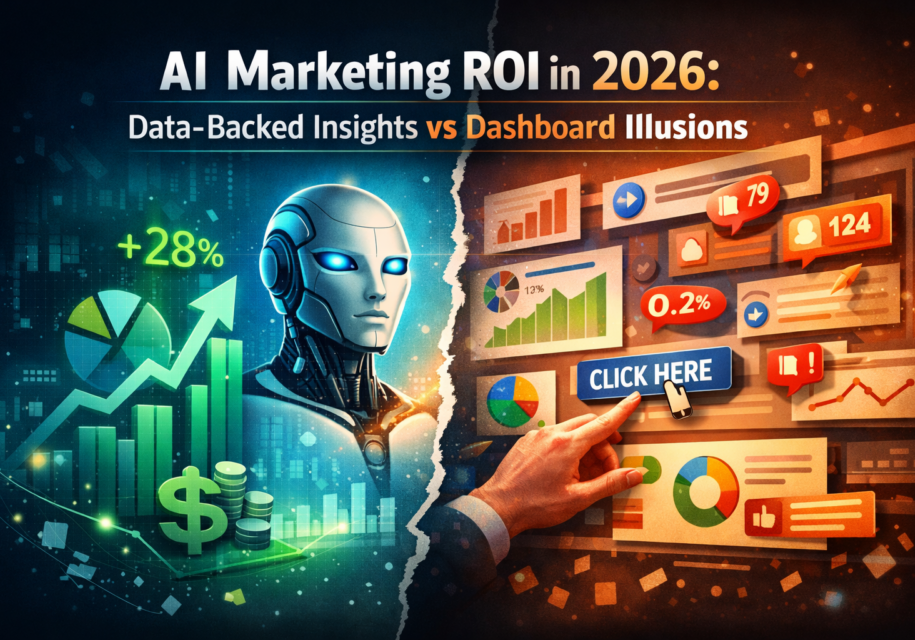
Surviving Google AI Search Mode: A New Game for Brands
Google rolled out its Google AI Search mode globally and made it available for its users. After introducing the AI overview, the AI search mode was another significant step that was thought out by the company’s executives and Sundar Pichai.
How many more options can the search bar hold for now? First, search, lens, Voice mode search, and more.
However, Google entered the field of AI search a couple of years late. OpenAI, Perplexity, and Deepseek are already dominating the AI space when it comes to solving or answering queries.
Is Google AI mode or Search Generative Experience (SGE) putting the whole search ecosystem in a pickle?
The effects will be vivid, and experts are raising their concerns. Who will be on the receiving end? Let’s dive deep into it.
Google AI Search mode, a latecomer in the AI game
The search engine company started the testing process in 2024, and by June 2025, the gradual rollout had been completed in heavily populated countries such as India and others.
AI answering users’ queries? Who hasn’t heard of it before? ChatGPT, Gemini, and Perplexity are the names, and their daily and monthly active users are upping the growth trajectory.
So, why did Google introduce the same thing? The answer lies in the user behaviour. Known globally and used heavily by almost everyone, it is impossible to claim that users will not put their hands on the AI search mode.
Why do you need five other AI apps when Google is already in your pocket? Ask whatever you feel like asking; they will answer in the typical AI-generated response, i.e., conversational responses.
Brands, publishers, advertisers, and individual contributors such as bloggers and writers will receive Google’s newfound fascination.
Subscribe to our bi-weekly newsletter
Get the latest trends, insights, and strategies delivered straight to your inbox.
Reducing click-through-rates
The blue links (URLs of websites) that Google suggests to users in response to their queries may face the heat. So, how and why? A user will ask for a simple way to clean silverware at home, and Google AI search mode will answer it thoroughly while providing few to no links at the end.
The AI will generate responses based on the training material (provided by bloggers, contributors, and brand pages), and if lucky, it may show ‘chosen’ links. The user may find what they are searching for, but websites or pages will not get the CTR (click-through rate).
This erodes direct traffic to original sites, making it harder for creators to build domain authority, gather leads, or monetize their content effectively. The traffic dilution and lower CTR will raise more problems for brands and users.
Lost leverage, less data, lower ROI with filtered convenience
When Google AI search mode answers absorb information without sending users to original sources, brands lose critical touchpoints with their audience.
No visit means no cookie, email capture, product impression, or chance to convert. It also weakens their SEO performance over time since less user interaction leads to poorer rankings.
Through content creation, SEO optimization, and ad dollars, marketing efforts start to feel like throwing messages into a void, with limited visibility or measurable ROI.
For users, Google AI search mode answers feel fast and efficient.
But in the long run, it shrinks exposure to diverse voices and deeper context. Users might miss out on useful images, how-to videos, community discussions, or product links that full websites offer.
There’s also a subtle risk: if AI becomes the sole narrator, users may only get what the algorithm decides is “enough,” rather than exploring layered or alternative perspectives.
Convenience wins, but discovery may lose with Google AI search mode.
Brands and businesses at stake
Google AI search mode puts businesses at stake by not providing ROI measuring tools for AI search. The company has created an ‘available soon’ placard for AI ROI measuring tools.
You (publisher, brand owner, SEO manager, contributor) must understand these threats and how they will affect your finances.
Publishers lose Ad revenue and subscriptions
For digital publishers, survival depends on eyeballs—every click fuels their ad revenue, subscriber base, and traffic value.
However, if Google’s AI delivers complete answers upfront, readers may never visit the original article. This results in a brutal chain reaction: fewer pageviews, lower ad impressions, and ultimately, reduced income.
AI may partially summarize paywalled content or subscriber-only articles, giving users the takeaway without payment or registration.
Niche publishers, in particular, risk being edged out as their content is mined without reward. This is not just traffic loss—it’s a slow erosion of business models.
For publishers who already operate on slim margins, the new AI search experience could force a shift from audience-first journalism to platform-dependent survival.
Leads to diminishing brand recall
When Google AI becomes the default explainer, users no longer associate answers with specific brands or publishers.
The AI delivers an anonymous summary from multiple pages with minimal citation or branding. As a result, users may remember the message through the messenger but never acknowledge the real author or brand behind the information.
For marketers, this means a direct hit to brand awareness. Even content that ranks highly or performs well may fail to create lasting recognition.
It’s like shouting into a void where the AI gets the credit. This weakens the long-term impact of thought leadership, authority-building, and consistent brand voice.
Over time, the brand becomes invisible, even when its content powers the web’s most helpful answers.
Cut to the chase
Google’s AI Search Mode has rolled out almost globally, but the decision is set to impact branding, marketing, and monetization. The new Search Generative Experience will reshape the SEO landscape for experts and may leave them in limbo for now.


